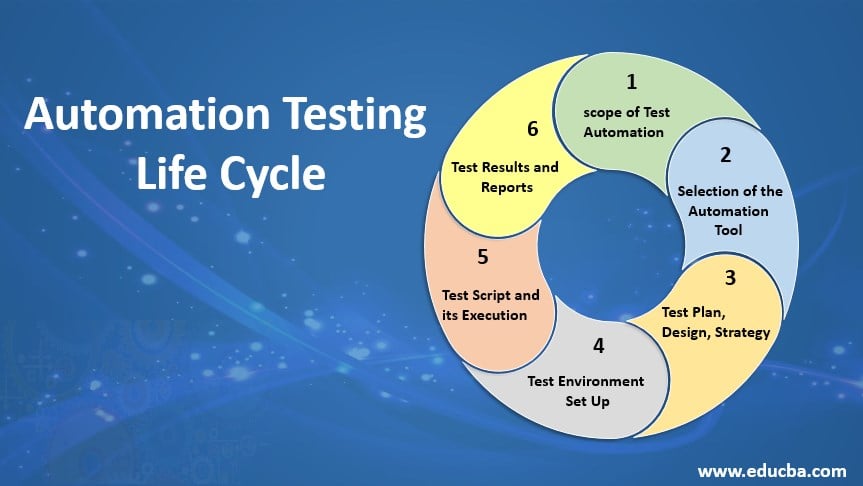Automation Testing: Trick Steps to Enhance Development Lifecycles
Automation Testing: Trick Steps to Enhance Development Lifecycles
Blog Article
From Manual to Automated Testing: A Comprehensive Guide to Transitioning Smoothly and Successfully
In the realm of software application testing, the change from guidebook to automated processes has come to be a significantly vital change for companies seeking to boost efficiency and accuracy in their testing techniques. The journey from manual to automated testing is not without its challenges, but when approached purposefully and with a clear plan in mind, the benefits can be significant.
Advantages of Automated Checking
Automated testing uses countless advantages, boosting efficiency and accuracy in software application growth processes. Automated tests can be run at the same time on several tools and operating systems, significantly speeding up the testing phase compared to hand-operated testing.
Furthermore, automated testing guarantees a higher level of accuracy in discovering flaws. Uniformity in screening is additionally improved, as automated examinations execute the very same actions precisely each time they are run.
Choosing the Right Devices

To start with, analyze your objectives and requirements. Comprehend the range of your job, the modern technologies entailed, and the capability of your group. This analysis will aid you establish the features and capacities you call for in your testing devices.
Secondly, consider the compatibility of the devices with your existing systems and procedures. Seamless assimilation with your present software development lifecycle is important to make sure a smooth transition to automation.
Additionally, evaluate the scalability and flexibility of the tools. As your testing requires develop, the devices need to have the ability to adjust and suit modifications efficiently.
Last but not least, consider the support and neighborhood around the tools. Robust support and an active customer community can offer important sources and support when implementing automated screening. By very carefully considering these facets, you can pick the right tools that align with your requirements and established the stage for an effective transition to automated screening.
Composing Efficient Examination Manuscripts

When crafting examination scripts, it is vital to take into consideration the certain requirements of the software application being tested and guarantee that the scripts address all essential performances. Detailed and clear calling conventions for examination manuscripts and examination situations can improve readability and maintainability. Additionally, including error handling devices within the test scripts can aid in identifying and resolving concerns immediately.
Furthermore, arranging test manuscripts into modular elements can boost reusability and scalability, decreasing redundancy and boosting effectiveness in test script maintenance. Regular reviews and updates to examine manuscripts are crucial to equal progressing software requirements and performances. By complying with these principles, testers can create effective and robust examination scripts that contribute considerably to the success of automated testing processes.
Integrating Automation Into Workflows
Effective assimilation of automation tools right into existing process improves and enhances procedures performance within software program growth cycles. When including automation into workflows, it is essential to determine repeated tasks that can be automated to conserve time and decrease human mistake. By perfectly integrating automated testing tools like Selenium or Appium into the software growth lifecycle, teams can accomplish faster feedback on code changes, leading to quicker pest discovery look these up and resolution. This integration permits constant screening throughout the advancement procedure, making sure that any concerns are identified at an early stage, leading to higher software application high quality. Additionally, automation can be utilized to trigger examinations automatically after each code dedicate, giving instant validation and liberating testers to concentrate on more complex circumstances. Proper assimilation of automation tools requires collaboration between advancement, screening, and procedures teams to establish a unified process that maximizes efficiency and performance in delivering high-grade software program products.
Guaranteeing a Smooth Shift
Efficiently transitioning to automated screening involves careful preparation and mindful execution to reduce interruptions and make best use of performance in the software development process - automation testing. To make sure a smooth shift, it is necessary official site to start by conducting an extensive evaluation of the existing screening procedures and identifying areas where automation can bring the most significant benefits. Engaging with all stakeholders early on in the process, including developers, testers, and task supervisors, is crucial for garnering assistance and buy-in for the automation campaign
Communication is crucial during this transition phase. Clear interaction of the objectives, advantages, and assumptions of automated testing helps to manage any resistance or problems that might develop. Furthermore, offering appropriate training and sources for employee to upskill in automation devices and strategies is crucial for guaranteeing a successful change.

Conclusion
To conclude, transitioning from manual to automated screening uses many advantages, consisting of enhanced performance and reliability. By picking the appropriate devices, writing reliable examination manuscripts, and incorporating automation perfectly into process, companies can guarantee a effective and smooth change. It is important to accept automation as a valuable property in software application screening procedures to boost overall top quality and efficiency.
In the realm of software screening, the shift from guidebook to automated processes has actually become a progressively crucial shift for organizations looking for to improve effectiveness and accuracy in their screening methods. Automated tests can be run at the same time on multiple tools and operating systems, significantly speeding up the testing stage compared to hand-operated screening. Consistency in screening is likewise improved, as automated examinations perform the same actions exactly each time they are run.To ensure the effective application of selected screening tools, the production of efficient test manuscripts plays a crucial duty in verifying the functionality and efficiency of automated processes - automation testing. my review here By complying with these principles, testers can develop robust and reliable test manuscripts that contribute substantially to the success of automated testing processes
Report this page